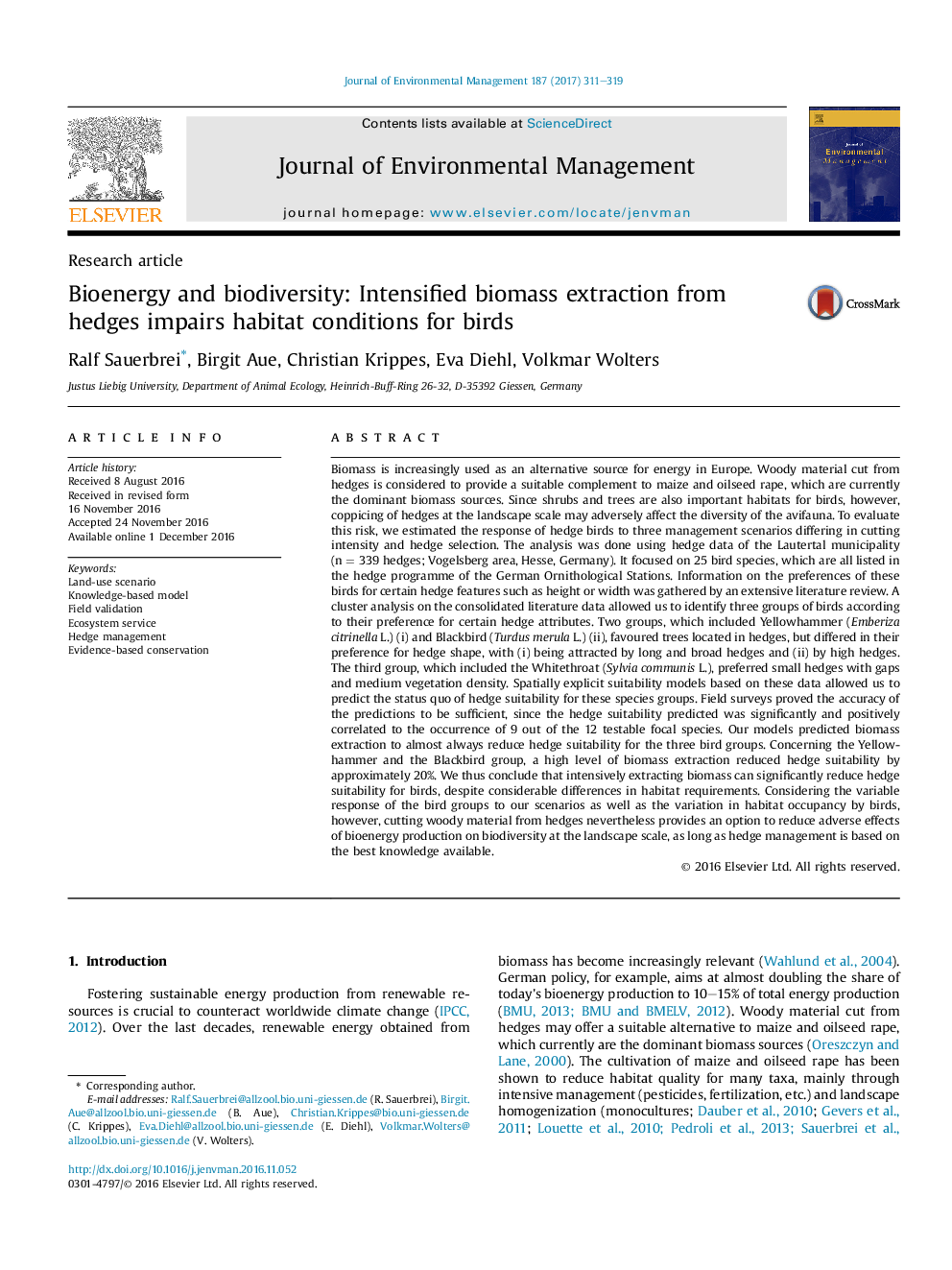| کد مقاله | کد نشریه | سال انتشار | مقاله انگلیسی | نسخه تمام متن |
|---|---|---|---|---|
| 5117379 | 1485228 | 2017 | 9 صفحه PDF | دانلود رایگان |
- Bird species can be clustered related to their hedge specific habitat requirements.
- Europe-wide results of basic research on birds can be used for local scale modelling.
- Knowledge-based models can be significantly validated by field data.
- Increased biomass exploitation from field hedges reduces bird diversity.
Biomass is increasingly used as an alternative source for energy in Europe. Woody material cut from hedges is considered to provide a suitable complement to maize and oilseed rape, which are currently the dominant biomass sources. Since shrubs and trees are also important habitats for birds, however, coppicing of hedges at the landscape scale may adversely affect the diversity of the avifauna. To evaluate this risk, we estimated the response of hedge birds to three management scenarios differing in cutting intensity and hedge selection. The analysis was done using hedge data of the Lautertal municipality (n = 339 hedges; Vogelsberg area, Hesse, Germany). It focused on 25 bird species, which are all listed in the hedge programme of the German Ornithological Stations. Information on the preferences of these birds for certain hedge features such as height or width was gathered by an extensive literature review. A cluster analysis on the consolidated literature data allowed us to identify three groups of birds according to their preference for certain hedge attributes. Two groups, which included Yellowhammer (Emberiza citrinella L.) (i) and Blackbird (Turdus merula L.) (ii), favoured trees located in hedges, but differed in their preference for hedge shape, with (i) being attracted by long and broad hedges and (ii) by high hedges. The third group, which included the Whitethroat (Sylvia communis L.), preferred small hedges with gaps and medium vegetation density. Spatially explicit suitability models based on these data allowed us to predict the status quo of hedge suitability for these species groups. Field surveys proved the accuracy of the predictions to be sufficient, since the hedge suitability predicted was significantly and positively correlated to the occurrence of 9 out of the 12 testable focal species. Our models predicted biomass extraction to almost always reduce hedge suitability for the three bird groups. Concerning the Yellowhammer and the Blackbird group, a high level of biomass extraction reduced hedge suitability by approximately 20%. We thus conclude that intensively extracting biomass can significantly reduce hedge suitability for birds, despite considerable differences in habitat requirements. Considering the variable response of the bird groups to our scenarios as well as the variation in habitat occupancy by birds, however, cutting woody material from hedges nevertheless provides an option to reduce adverse effects of bioenergy production on biodiversity at the landscape scale, as long as hedge management is based on the best knowledge available.
Journal: Journal of Environmental Management - Volume 187, 1 February 2017, Pages 311-319
